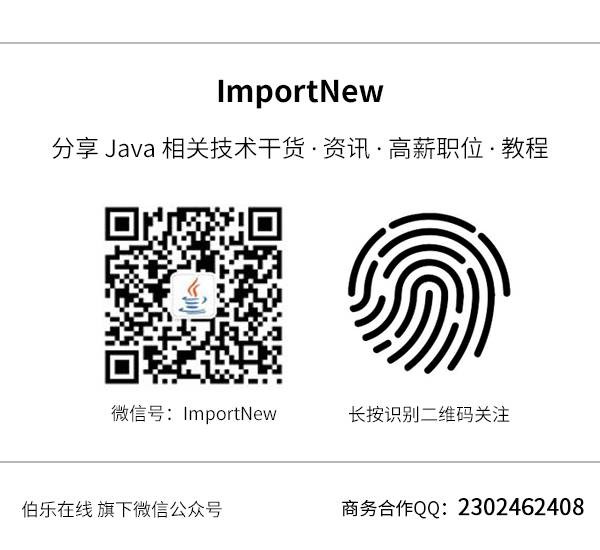(點選上方公眾號,可快速關註)
來源:Hosee ,
my.oschina.net/hosee/blog/1786130
字串拼接問題應該是每個Java程式員都熟知的事情了,幾乎每個Java程式員都讀過關於StringBuffer/StringBuilder來拼接字串。
在大多數的教程中,也許你會看到用+號拼接字串會生成多個String,導致效能過差,建議使用StringBuffer/StringBuilder來拼接。
可是真的是這樣的嗎?
本文在JDK8中做瞭如下實驗:
public static void main(String[] args) {
String result = “”;
result += “some more data”;
System.out.println(result);
}
透過javap -c來反編譯得到:
Code:
0: aload_0 // Push ‘this’ on to the stack
1: invokespecial #1 // Invoke Object class constructor
// pop ‘this’ ref from the stack
4: return // Return from constructor
public static void main(java.lang.String[]);
Code:
0: ldc #2 // Load constant #2 on to the stack
2: astore_1 // Create local var from stack (pop #2)
3: new #3 // Push new StringBuilder ref on stack
6: dup // Duplicate value on top of the stack
7: invokespecial #4 // Invoke StringBuilder constructor
// pop object reference
10: aload_1 // Push local variable containing #2
11: invokevirtual #5 // Invoke method StringBuilder.append()
// pop obj reference + parameter
// push result (StringBuilder ref)
14: ldc #6 // Push “some more data” on the stack
16: invokevirtual #5 // Invoke StringBuilder.append
// pop twice, push result
19: invokevirtual #7 // Invoke StringBuilder.toString:();
22: astore_1 // Create local var from stack (pop #6)
23: getstatic #8 // Push value System.out:PrintStream
26: aload_1 // Push local variable containing #6
27: invokevirtual #9 // Invoke method PrintStream.println()
// pop twice (object ref + parameter)
30: return // Return void from method
可以看到Java編譯器優化了生成的位元組碼,自動建立了一個StringBuilder,併進行append操作。
由於構建最終字串的子字串在編譯時已經已知了,在這種情況下Java編譯器才會進行如上的最佳化。這種最佳化稱為a static string concatenation optimization,自JDK5時就開始啟用。
那是否就能說明在JDK5以後,我們不再需要手動生成StringBuilder,透過+號也能達到同樣的效能?
我們嘗試下動態拼接字串:
動態拼接字串指的是僅在執行時才知道最終字串的子字串。比如在迴圈中增加字串:
public static void main(String[] args) {
String result = “”;
for (int i = 0; i < 10; i++) {
result += “some more data”;
}
System.out.println(result);
}
同樣反編譯:
Code:
0: aload_0 // Push ‘this’ on to the stack
1: invokespecial #1 // Invoke Object class constructor
// pop ‘this’ ref from the stack
4: return // Return from constructor
public static void main(java.lang.String[]);
Code:
0: ldc #2 // Load constant #2 on to the stack
2: astore_1 // Create local var from stack, pop #2
3: iconst_0 // Push value 0 onto the stack
4: istore_2 // Pop value and store it in local var
5: iload_2 // Push local var 2 on to the stack
6: i2d // Convert int to double on
// top of stack (pop + push)
7: ldc2_w #3 // Push constant 10e6 on to the stack
10: dcmpg // Compare two doubles on top of stack
// pop twice, push result: -1, 0 or 1
11: ifge 40 // if value on top of stack is greater
// than or equal to 0 (pop once)
// branch to instruction at code 40
14: new #5 // Push new StringBuilder ref on stack
17: dup // Duplicate value on top of the stack
18: invokespecial #6 // Invoke StringBuilder constructor
// pop object reference
21: aload_1 // Push local var 1 (empty String)
// on to the stack
22: invokevirtual #7 // Invoke StringBuilder.append
// pop obj ref + param, push result
25: ldc #8 // Push “some more data” on the stack
27: invokevirtual #7 // Invoke StringBuilder.append
// pop obj ref + param, push result
30: invokevirtual #9 // Invoke StringBuilder.toString
// pop object reference
33: astore_1 // Create local var from stack (pop)
34: iinc 2, 1 // Increment local variable 2 by 1
37: goto 5 // Move to instruction at code 5
40: getstatic #10 // Push value System.out:PrintStream
43: aload_1 // Push local var 1 (result String)
44: invokevirtual #11 // Invoke method PrintStream.println()
// pop twice (object ref + parameter)
47: return // Return void from method
可以看到在14的時候new了StringBuilder,但是在37的時候goto到了5,在迴圈過程中,並沒有達到最最佳化,不斷在生成新的StringBuilder。
所以上述程式碼類似:
String result = “”;
for (int i = 0; i < 10; i++) {
StringBuilder tmp = new StringBuilder();
tmp.append(result);
tmp.append(“some more data”);
result = tmp.toString();
}
System.out.println(result);
可以看到不斷生成新的StringBuilder,並且透過tostring,原來的StringBuilder將不再取用,作為垃圾,也增加了GC成本。
所以,在實際的使用中,當你無法區分字串是靜態拼接還是動態拼接的時候,還是使用StringBuilder吧。
Reference:
-
http://www.pellegrino.link/2015/08/22/string-concatenation-with-java-8.html
看完本文有收穫?請轉發分享給更多人
關註「ImportNew」,提升Java技能

 知識星球
知識星球